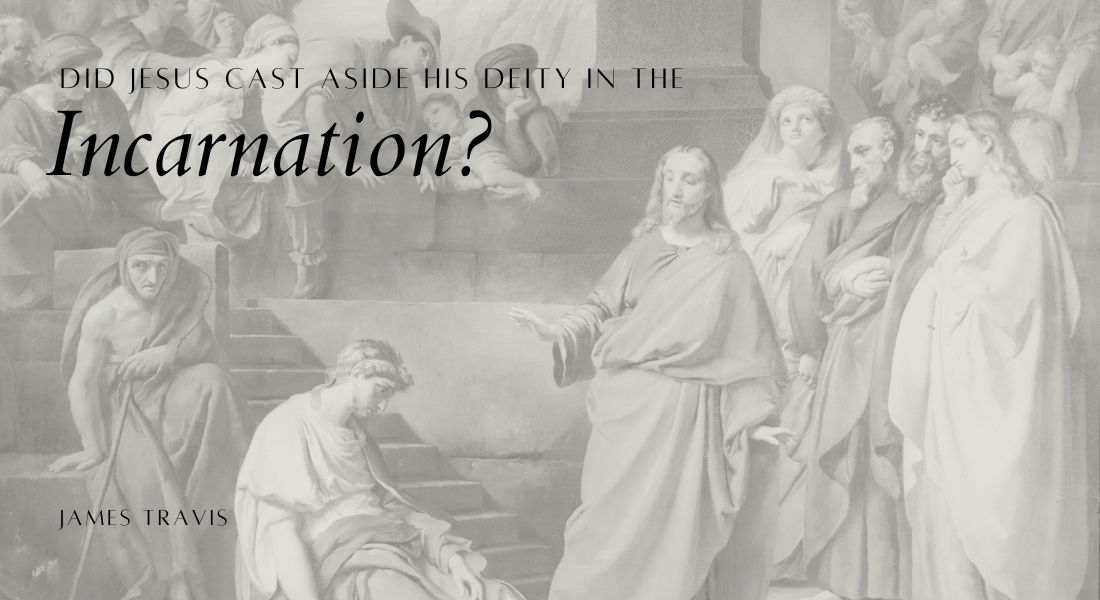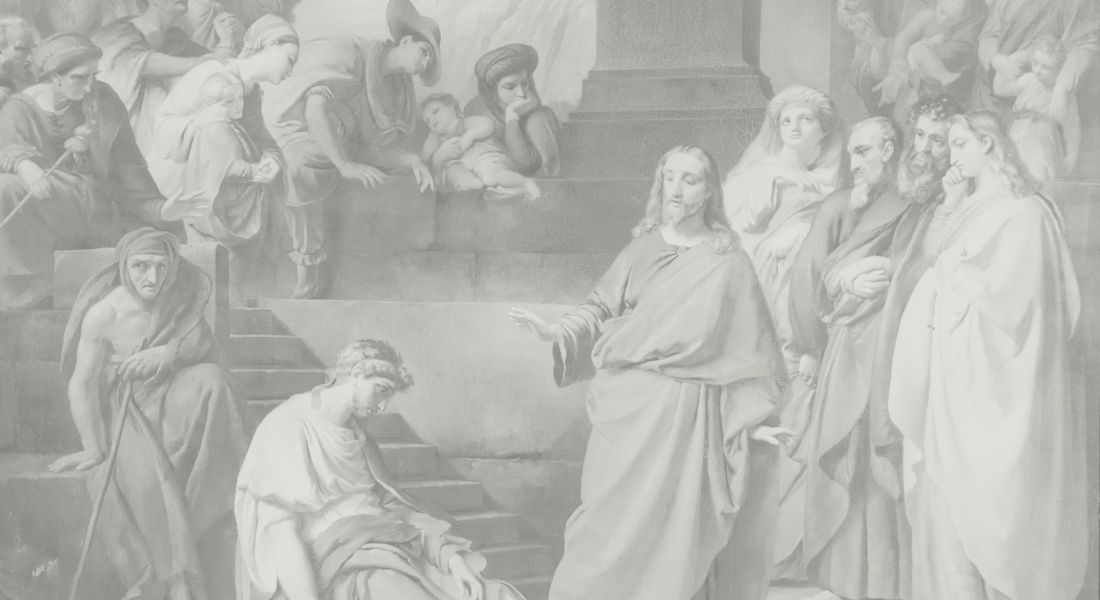
The passage of Philippians 2:1-11 seems to have been a source of contention for those on both sides of the orthodox fence, so to speak. On the one hand, we have those who say Jesus cast aside His Deity to become fully human. On the other, those who say that Jesus added humanity to His Deity. The heretical teachings to come from this are as vast as they are varied, so, what is the truth?
This article is in response to the essay titled, “Christ, Adam and Preexistence Revisited,” by Lincoln D. Hurst, found in Where Christology Began: Essays on Philippians 2 (full reference below).
Hurst begins by stating the main line of enquiry to be followed;
‘…does the passage refer to the action of a preexistent being who “empties himself” and “becomes” man, or does it refer from start to finish to the action of a human being, Jesus of Nazareth?’
Hurst then goes on to write that for the most part, scholarly opinion agrees that the “…referent of the language is the preexistent Christ…”. I must admit, although Bible scholar I am not, that this would be my own interpretation of this passage too; that the preexistent Christ is being discussed, not simply His human nature and body post-incarnation. When you really stop and think about the wider narrative of God’s Word, separating the man Jesus from the Divine Jesus seems to jar with the consistent message of the theanthropic Godman (John 1:14, 8.58; Colossians 2:9, 2 John 1:7, 10:30; Hebrews 2:14).
It is not surprising, then, given the dual-natured theanthropic person of Christ, that some may proffer that here in Philippians 2:1-11 the human natured, physical bodied Jesus of Nazareth is being discussed. It almost goes without saying that wherever there are two or more possibilities of a certain line of thinking, there will be two or more groups form who will then put forward their case for their own interpretation.
Hurst does a fine job of detailing the position of J.D.G. Dunn who asserts that the hymn of Philippians 2 is, in fact, dealing with the human nature of Christ, rather than Christ in His preexistent Deity, the “anthropological approach,” as Hurst titles it. The overall tone and style of Hurst’s writing gives the reader the impression that he has the utmost respect for the position and person of Dunn – Hurst calls Dunn’s case “…impressive…” – but nonetheless disagrees with the thought that the subject of the Philippians 2 hymn is the human nature of Jesus rather than the preexistent person of the eternal Messiah, Jesus Christ.
One passage, in particular, brought me to this conclusion. Hurst writes,
“One may agree strongly with…Dunn’s argument, that the comparison/contrast with Adam gives the best reading of the hymn, without accepting his unnecessary corollary that the Adam-Christ parallel therefore demands that we abandon the idea of Christ’s personal preexistence and equality with God in the hymn.” (emphasis added).
To further the case of either side, more research would need to be done. As previously stated, I would err on the side of the preexistent Divine person of Jesus Christ being the subject of the hymn, and consequently of the Adam-Christ comparison that so often is discussed here. This being the case, my own reading and study took me to places where this position can be strengthened.
Charles C. Ryrie, in his book, A Survey of Bible Doctrine, writes with great clarity on the kenosis of the Divine Christ. He states,
“The meaning of Philippians 2:1-11 has been greatly debated in relation to the person of the incarnate Christ.” (emphasis added).
Immediately, then, Ryrie seems to be of the position that the preexistent person of Jesus is the subject of the hymn, rather than the human natured Jesus of Nazareth. The second half of the quoted statement, in particular, gives this impression. To elucidate in the simplest possible way, the human natured human being of Jesus of Nazareth simply cannot be described as the person of the incarnate Christ.
The dispute, in the mind of Ryrie at least, seems to be around the kenosis, the act of emptying, rather than the vessel that is to be emptied, human or Divine. Interestingly, as he continues this line of thinking, Ryrie writes that the kenosis of Christ does not mean emptying or losing at all, rather, it means that Christ took on humanity. He states,
“… the kenosis cannot be understood to mean a subtraction of deity but the addition of humanity with its consequent limitations.”
A seminary professor of mine phrased it like this – “In the incarnation, there was no loss of Deity, only the addition of humanity.”
To elaborate a little further on the doctrine of kenosis, as it ties in so well with the aforementioned point, Ryrie writes,
“The concept involves the veiling of Christ’s preincarnate glory (Jn 17:5), the condescension of taking on Himself the likeness of sinful flesh (Ro 8:3), and the voluntary nonuse of some of His attributes of deity during the time of His earthly life” (Mt. 24:36, 1972, P59).
Clear to see, then, the weight of evidence and logic behind the position of Hurst and the previously mentioned scholars indicate that the referent of the passage of Philippians 2:1-11 is the preexistent, Divine Christ.
To further strengthen this position, we can turn to Henry Clarence Thiessen, who in his excellent book, Lectures in Systematic Theology, draws on something often sadly and tragically missing from Bible interpretation: proper and careful reading of the text. To elaborate, one must start at the beginning of what is now divided as Philippians chapter two.
“So if there is any encouragement in Christ, any comfort from love, any participation in the Spirit, any affection and sympathy, complete my joy by being of the same mind, having the same love, being in full accord and of one mind. Do nothing from selfish ambition or conceit, but in humility count others more significant than yourselves. Let each of you look not only to his own interests, but also to the interests of others. Have this mind among yourselves, which is yours in Christ Jesus” (Philippians 2:1-5, ESV).
It is clear to see, for the careful and proper reader of the text, that we are reading here of non-physical things; encouragement, affection, sympathy (v.1), joy, the same mind, love, one mind (v.2), selfish ambition, conceit, humility (v.3), interests, the interests of others (v.4), and again, this mind (v.5). Paul then goes on to write ‘Have this mind among yourselves, which is yours in Christ Jesus,’ (2:5). Clear, then, that Paul is writing about attitudes and in particular, attitudes of mind.
If, then, Paul is urging us to take on such attitudes, to adopt the aforementioned frame of mind, it goes by logical corollary that as he transitions into saying that we can do this and have this attitude through being in a right relationship with the risen Jesus (2:5), that he would go on to reference Jesus as our example of this attitude.
To exhort us to take on a specific frame of mind, but then reference some physical act of Christ which we are simply unable to emulate, would seem illogical. The Bible as a flawless, inerrant and logical living piece of literature would not, I believe, exhort the attitude then display the physical in one sentence.
To reference the correct definition of the kenosis above, and to consolidate this position, Thiessen writes that many have misunderstood or misinterpreted and that,
“They say that Christ emptied himself of his relative attributes…while retaining his immanent attributes…This, however, is not the case.”
When we begin to understand the kenosis correctly, we begin to see that the passage of Philippians 2:1-11 is urging us to adopt the attitude and frame of mind that Christ did, even though He in His Divine nature could not empty, change, or add to His perfect self.
As Christ voluntarily took on humanity, the “form of a servant, being born in the likeness of men.” (Philippians 2:7), as Christ so readily and willingly demonstrated for us the attitude of humility which we should take, the attitude of humility which is to be the mark of our walk with the Lord, we see only more clearly that the referent of Philippians 2:1-11, that the subject of the contrast with Adam, is in fact the preexistent, preeminent and prestigious Divine Christ.
This flows so well when one looks to the text,
“Have this mind among yourselves, which is yours in Christ Jesus, who, though he was in the form of God, did not count equality with God a thing to be grasped” (Philippians 2:5-6).
When this passage is read with the focus on the attitude we are exhorted to have, as Thiessen alludes to, it is almost impossible not to see it this way.
On this point, David Guzik writes,
“It is all too easy for us to read the following description of Jesus and admire it from a distance. God wants us to be awed by it, but also to see it as something that we must enter into and imitate. [Have this mind] means that it is something that we have choice about.”
To turn to the application of this point, as Hurst writes, the whole point and meaning behind this section is to inspire action for followers of Christ, and I believe it circles back to the attitude of humility discussed above.
Hurst states,
“…Christians have rights, but they must be willing to surrender those rights if they clash with a greater principle, love.”
Here the application lends itself to further strengthening the argument that the subject of the passage is actually the Divine Christ. The application calls for the humility of the believer with the model of the Divine Christ as the star to follow.
Hurst continues,
“…it would make more sense to say that the Christ of the hymn already possessed the right to be treated as equal with God, but freely surrendered that right for the sake of a greater principle – God’s purpose of love in the incarnation…there is no reason to abandon this principle in our understanding of the hymn of Philippians 2.”
For us to adopt this humble attitude that is so often called for in Scripture (1 Peter 5:5-6; James 1:21; Colossians 3:12; Ephesians 4:2, and many more), we look for the supreme example, and, as per usual, we find it in Jesus Christ.
He, “…though he was in the form of God, did not count equality with God a thing to be grasped, but emptied himself, by taking the form of a servant, being born in the likeness of men. And being found in human form, he humbled himself by becoming obedient to the point of death, even death on a cross” (Philippians 2:6-8).
I would wholeheartedly agree with Hurst who writes that the idea of contrasting the upward grasp of Adam in the garden with the humble taking-on of humanity by Christ helps to give context and understanding to the passage of Philippians 2:1-11. However, even though this is the case, we need not necessarily, “…abandon the idea of Christ’s personal preexistence and equality with God…” because of the contrast. All things above considered, I would stand by the assertion of Hurst, as previously stated, that the subject is the preexistent person of the Divine Christ.
So, preexistent Christ having added humanity to His Deity, or Divine Christ casting aside His Deity to walk as a man as an example to you and me of a human in right relationship with God; one is orthodoxy, one is a rehashing of ancient heresies such as Nestorianism.
God’s Word is clear on who Jesus is, are we?
References
Guzik, D. (2013). Enduring Word Bible Commentary Philippians Chapter 2. Enduring Word. Retrieved 6 April 2018.
Martin, R., & Dodd, B. (1998). Where Christology began. Louisville (Ky.): Westminster John Knox Press.
Ryrie, C. (1972). A Survey of Bible Doctrine. Chicago: The Moody Bible Institute.
Thiessen, H. (2006). Lectures in systematic theology. Grand Rapids: Eerdmans.










